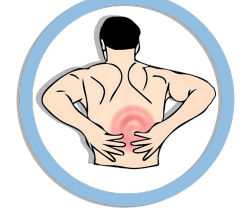 June being the Hernia Awareness Month, this blog is meant to educate you on hernias, their effects, causes, and more. You must have heard about them and we’re sure you would have several questions. So, what are hernias? Do hernias happen only in men? Let us throw light on this topic and put an end to all doubts.
June being the Hernia Awareness Month, this blog is meant to educate you on hernias, their effects, causes, and more. You must have heard about them and we’re sure you would have several questions. So, what are hernias? Do hernias happen only in men? Let us throw light on this topic and put an end to all doubts.
What is hernia?
A hernia is known to be a lump or a protrusion of an organ or a piece of tissue from its original space. A hernia generally is a piece of bowel in the abdomen or its lining called the omentum that protrudes through a weak part in the abdominal wall. The abdominal wall is made up of multiple layers of various tissues and muscles. The weak parts may develop within these layers to allow contents of the abdominal cavity to protrude. It is also known that the most common hernias develop in the groin (inguinal hernias) and in the diaphragm (hiatal hernias). They could be present at birth (congenital), or they could develop at any acquired time.
What are the different types of hernia?
There are four main types of hernia.
- Femoral hernia: This is a bulge in the upper thigh, below the groin. It is more common among women than men.
- Hiatel hernia: This occurs in the upper part of the stomach. The upper part of the stomach pushes into the chest.
- Incisional hernia: This occurs situations where you have had abdominal surgery in the past.
- Inguinal hernia: This is in the form of a bulge in the groin. Seen commonly in men, this hernia can go all the way down into the scrotum.
What causes hernia?
There is no direct cause of hernias. Sometimes, they occur with heavy lifting, straining while passing bowels or any activity that increases the pressure inside the abdomen. It may be present at birth but the bulge might not be noticeable until later in life. Some people have a family history of hernias.
Infants and young children may suffer from hernias too. They occur when there is weakness in the abdominal wall. The following might be some of the causes of hernias:
- Chronic constipation and pushing hard (straining) to have a bowel movement
- Chronic cough
- Cystic fibrosis
- Enlarged prostate, straining to urinate
- Obesity
- Fluid accumulation in the abdomen (ascites)
- Heavy lifting
- Peritoneal dialysis
- Poor nutrition
- Smoking
- Overexertion
- Undescended testicles
What are the symptoms of hernia?
There are no known symptoms of a hernia apart from discomfort and pain. This pain or discomfort is worse while standing, straining or lifting heavy objects. A common symptom is a bump that becomes sore and grows.
When a hernia gets bigger, it may obstruct a passage and block blood supply. Other common symptoms include nausea, vomiting, gas, and constipation. At this stage, a surgery is needed at the earliest.
How can one prevent hernia?
Here are some of the precautions one can take to prevent hernias:
- Lose weight, if overweight
- Use proper lifting techniques
- Avoid constipation by eating plenty of fiber, drinking lots of fluid, visit the bathroom when you feel the urge to without delay.
- Exercise regularly
- Men should see their health care provider if they strain with urination. This is a symptom of an enlarged prostate
What are they different types of abdominal hernias?
There are 3 types of abdominal hernias, namely:
- Hernia of the abdominal and pelvic floor
- Hernia of the anterior abdominal wall
- Hernia of the diaphragm
Hernia of the abdominal and pelvic floor
The most common of abdominal hernias is inguinal hernia. The inguinal canal is the opening that allows the spermatic cord and testicles to descend from within the abdomen, where they develop in the scrotum. In women, inguinal hernias have lesser chances to occur as there is no need for a permanent opening in the inguinal canal.
A femoral hernia is likely to occur through the opening in the floor of the abdomen where the femoral artery and vein pass through to the leg. The wider bone structure can cause femoral hernias to occur more frequently in women.
The obturator hernias are not very common. They are common only among women who have gone through multiple pregnancies or have lost a lot of weight. They occur through the obturator canal which is another connection of the abdominal cavity to the leg and contains the obturator artery, vein and nerve.
Hernia of the anterior abdominal wall
The abdominal wall comprises of muscles that mirror each other from right and left. It includes the rectus abdominus as well as the internal obliques, the external obliques, and the transversalis. Diastasis recti is not a true hernia but rather a weakening of the membrane where the two rectus abdominus muscles come together.
Hernia of the diaphragm
Hiatel hernias or hernia of the diaphragm occurs when a part of stomach slides through the opening in the diaphragm. It is where the esophagus passes from the chest into the abdomen. This happens when the lower esophagus and portions of the stomach slide through the diaphragm into the chest. The sliding hiatel hernia is one of the common types of hernia.
Now that you know all that you must about hernias, it is important that you take the proper measures to curb them. Try to maintain a healthy lifestyle, and get regular check-ups from your doctor. Knowing is half the battle, and this month, let’s do out best to educate our friends and loved ones about this condition.



